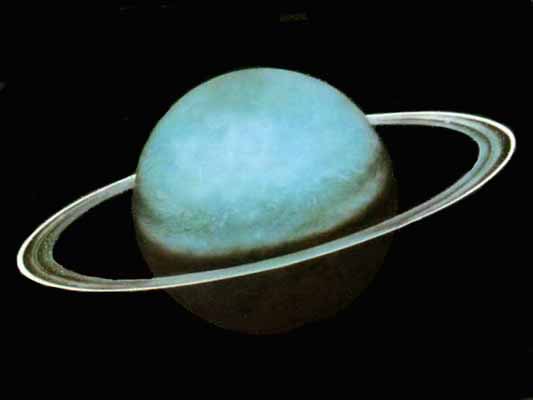
Uranus is the seventh planet from the Sun and the third largest of the nine planets (in size). Uranus is larger in size but smaller in weight thanNeptune.
Click here for Uranus video
Like the other gas planets, Uranus has bands of clouds that blow around rapidly. Uranus' bands are very, very faint. They can only be seen with special treatment of pictures obtained by the Voyager 2spacecraft. Here are examples of what Uranus looks like before and after image enhancement.
Uranus' blue colour is the result of a gas called "methane" found in the planet's upper atmosphere. Uranus may have coloured bands like Jupiter's, but they are hidden from view by the overlaying methane layer.
Like the other gas planets, Uranus has rings. Uranus' rings are very dark like Jupiter's rings. The rings are made up of fairly large particles ranging up to 10 meters across in addition to fine dust - much like the rings of Saturn. There are 11 known rings, all are very faint. Uranus' brightest ring is known as the "Epsilon" ring.
Uranus has 15 known moons. Voyager 2 discovered 10 small moons in addition to the 5 large ones already known. The biggest Uranus moon is Titania, about 788 km in diameter. It is likely that there are many more tiny moons within the rings.
Read more about Uranus here
 Look for Uranus! Uranus is sometimes just barely visible with the naked eye on a very clear night; it is fairly easy to spot with binoculars (if you know exactly where to look). A small astronomical telescope will show a small disk. Look for Uranus! Uranus is sometimes just barely visible with the naked eye on a very clear night; it is fairly easy to spot with binoculars (if you know exactly where to look). A small astronomical telescope will show a small disk. |
